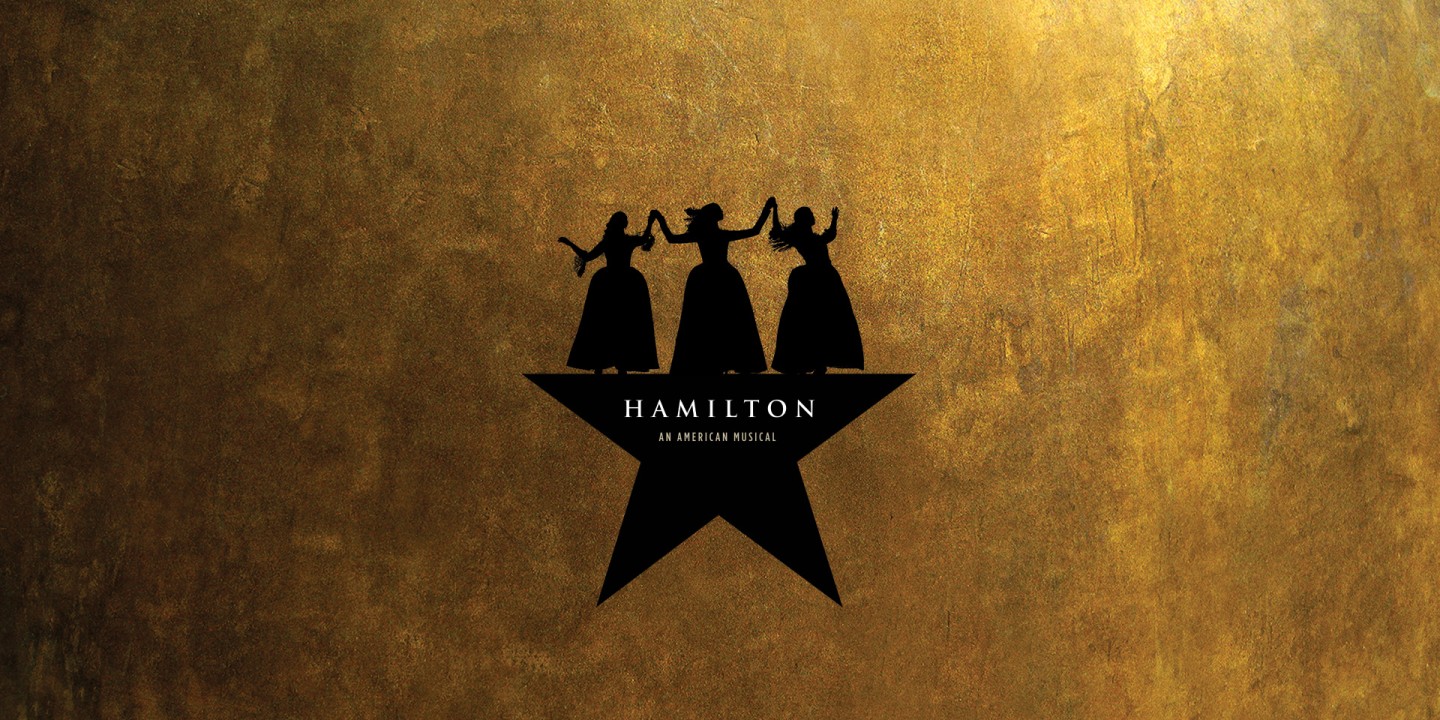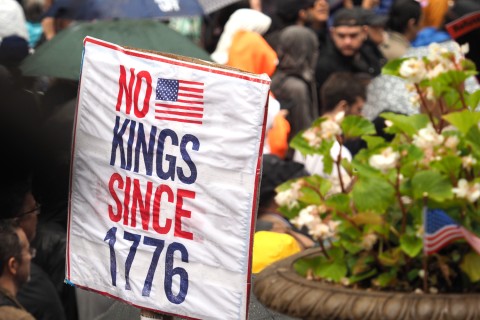Hamilton is so much bigger than Hamilton
Being in the audience felt like a communal experience, almost a liturgical one.

Hamilton, the musical that has been selling out on Broadway since 2015, finally came to Chicago. I admit it—I’m not used to waiting for my entertainment. When I can stream any entertainment at any time, day or night, the inaccessibility of this hugely popular show is a not entirely welcome phenomenon. When tickets finally went on sale, I bought mine right away.
As Hamilton’s many fans know, the show deploys people of color to portray white characters from American history, such as George Washington and Thomas Jefferson. The musical is infused with rap and hip-hop—musical forms created by people of color. The America of playwright Lin-Manuel Miranda’s show is a land of opportunity where anyone can grow up to be “a hero and a scholar”—even a “bastard, orphan, son of a whore and a / Scotsman, dropped in the middle of a forgotten / Spot in the Caribbean by providence, impoverished, in squalor.” This is the America where immigrants “get the job done,” where determined and talented individuals pull themselves up and change history.
Read our latest issue or browse back issues.
Hamilton keeps this American orthodoxy intact even as it proceeds to poke holes in it. The show gently but persistently refuses to drop women and slaves out of American history, instead representing their challenges honestly and reinterpreting traditional understandings. A charming video on YouTube shows Miranda performing an early version of Hamilton’s opening song at the Obama White House. He tells that the audience that he’s writing about Alexander Hamilton, a person who “embodied hip-hop.” His audience laughs at the incongruity, but the success of the musical is due to the power of what he envisioned.
On the day I attended Hamilton, the audience appeared to know every lyric. Like me, the young woman at my side had an obstructed view. Yet she kept saying, “I can’t believe we’re at Hamilton!” in a tone conveying access to divine mystery. When Hamilton, Aaron Burr, King George, and Thomas Jefferson came on stage, the audience greeted each one with a delighted murmur of familiarity, and when King George sang that he would “kill your friends and family” to remind us “of his love,” the audience sang along.
All of this audience participation helps Hamilton succeed as live art, as a communal experience, because of its fine craftsmanship, and because it touches on the audience’s deeply held beliefs. I could not help but think of liturgy—the “work of the people”—that turns doctrine into a living, breathing reality.
Hamilton’s final line is a repeated and haunting, “Who lives, who dies, who tells your story?” Though on its face the story is Alexander Hamilton’s, the combination of staging, lyrics, casting, and musical form makes for a story that’s much bigger. It’s the story of Eliza Hamilton and the story of the slaves who are the subtext of the lyrics. It’s the story of a diverse cast and of a diverse audience. It’s a hope for a new American orthodoxy. While Christian hope can never rest in any American orthodoxy, Hamilton may inform how we Christians perform liturgy together in an effort to draw closer to the truth that is in God.
A version of this article appears in the March 29 print edition under the title “Christian hope in Hamilton.”






